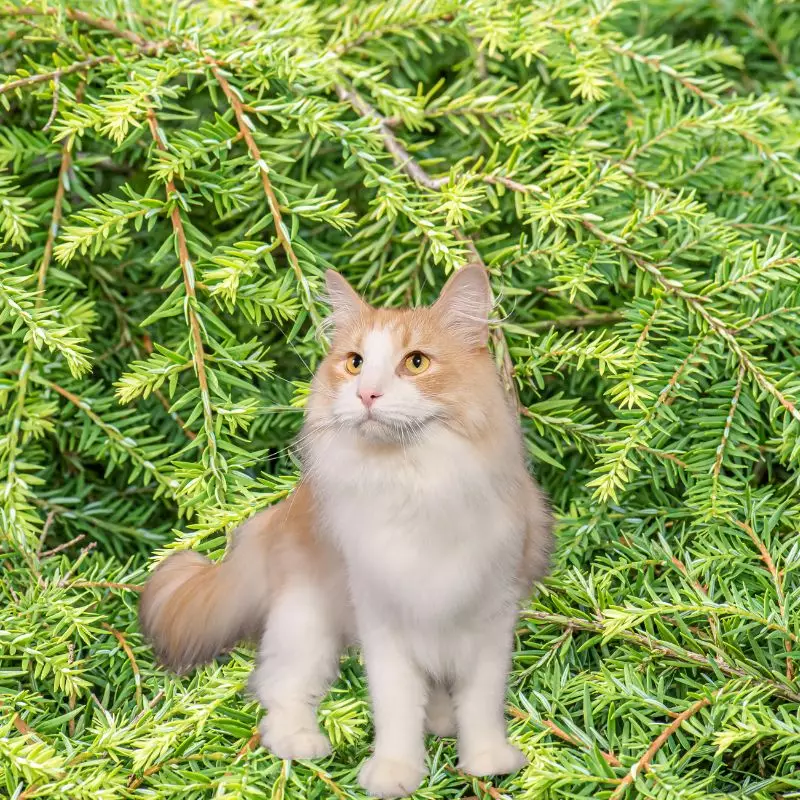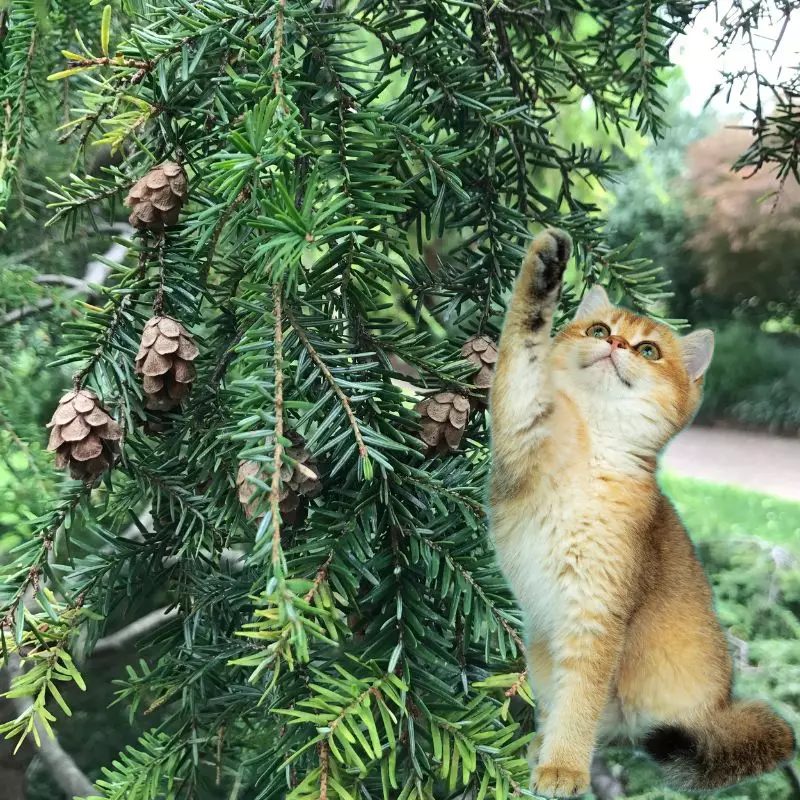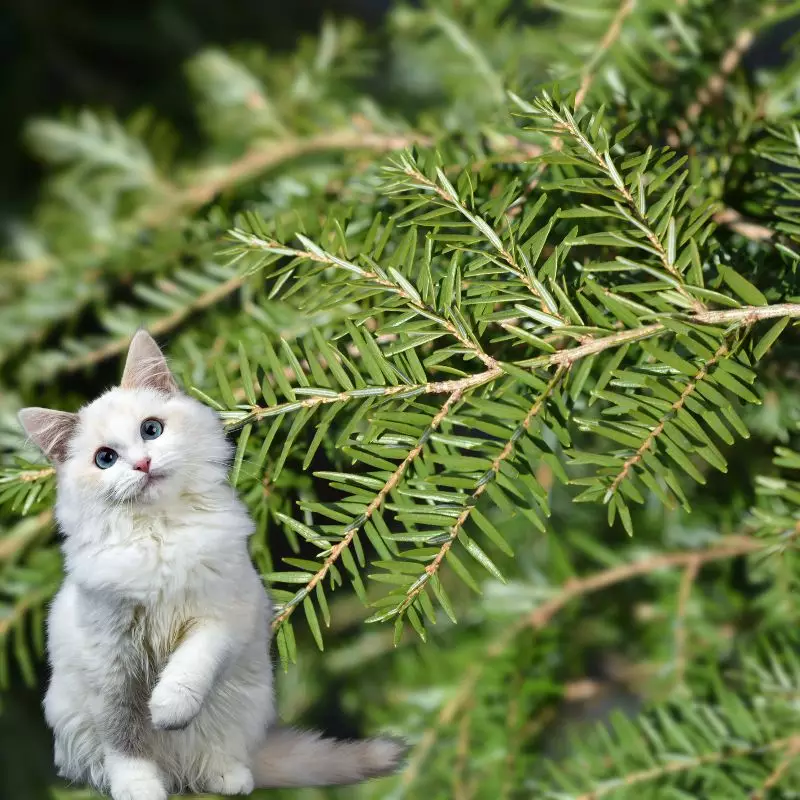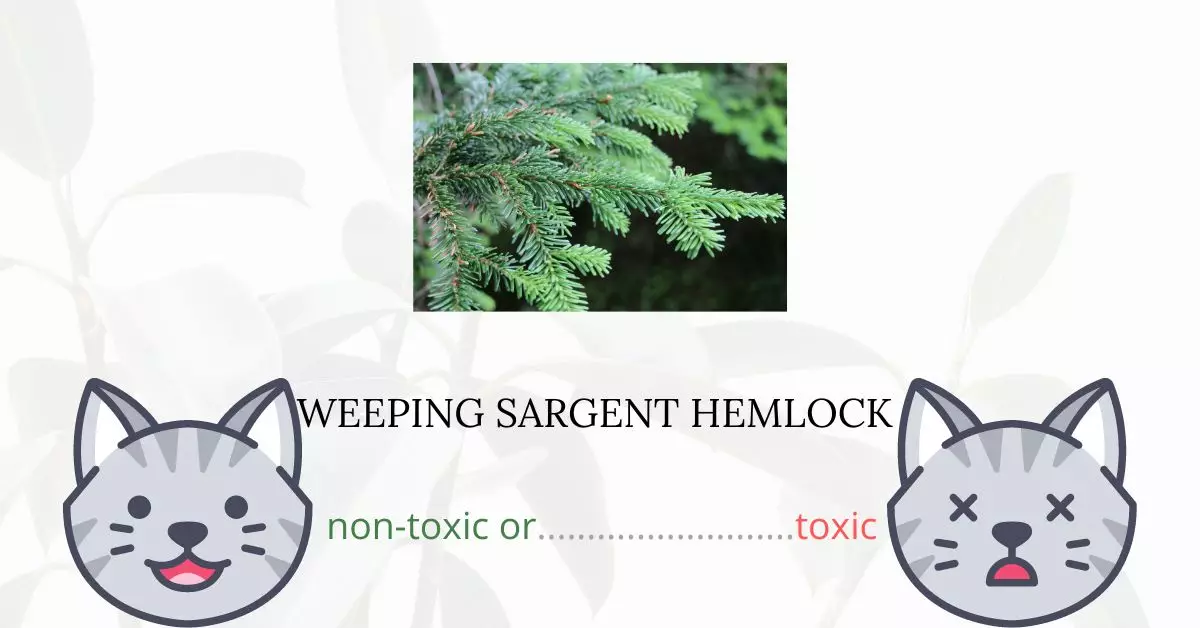No, the Weeping Sargent Hemlock, also known as Sargent’s weeping hemlock, is not toxic for cats.
In collaboration with a team of experienced DVMs (doctors of veterinary medicine), we’ve delved deep into understanding the potential risks associated with various plants. Their expert contributions have enriched our understanding and have allowed us to provide accurate and up-to-date information, specifically concerning the Weeping Sargent Hemlock and its effects on cats. Additionally, our findings are supported by high-authority websites such as ASPCA and PetMD, both of which list this evergreen plant as non-toxic for cats, as well as for dogs and horses. Rest assured, your feline friends are safe to be around this shrub.
Can Cats Eat Weeping Sargent Hemlock?

A small bite of Sargent’s weeping hemlock will not cause lethal effects on your cats. Since this shrub does not have poisonous properties, your cats can safely touch, lick, or bit this plant. However, cats should not eat excessive amounts of this shrub (or any kind of plant) because they are obligate carnivores.
Unlike herbivores and omnivores, carnivores do not have the capability to process plant materials in their stomach. As a result of overeating plants, cats suffer from an upset stomach and other GI tract problems. They may manifest signs of diarrhea, abdominal pain, and vomiting. This should not worry you because these symptoms will go away once the plant materials are ejected out of the cat’s body.
What is Weeping Sargent Hemlock?

A rather large, mound-forming shrub called Sargent’s weeping hemlock looks lovely growing over a retaining wall or on a bank. Larger yards frequently have it planted close to water features.
The slow-growing, spreading Sargent’s weeping hemlock can reach a height of 10′ if it was given a stake to climb at the start. The width of mature plants can reach 20′. Strong stems that support the weeping branchlets in the air contribute to the plant’s overall sturdy, graceful appearance.
Smaller weeping branches covered in short, dark green needles weep from its horizontally spreading branches. Regular clipping can regulate its size.
The majority of hemlocks are indigenous to North American and Southeast Asian forests. They can tolerate a lot of shade, especially when they are young.
Keeping Cats Away From Weeping Sargent Hemlock

Cats enjoy sifting through free soil, which your indoor plants will have in abundance. Try covering the soil with a thick layer of intimidating stones. Avoid packing it so tightly that water cannot escape through the dirt and reach the bottom. The roots of your plant will suffer from this.
Felines tend to favor strolling on soft, thorn-free soil to thorny terrain. By adding simple thorny arrangements like twigs, pinecones, eggshells, stone mulch, holly cuttings, or chicken wire, you can make your nursery beds or plants look less inviting and less like a litter box.
Using an alarm to keep your cat away from plants can have excellent outcomes. It may be sufficient to have something hysterical and frightful occur when they hop up by your plants to deter them from doing so.
Plants to Avoid For Your Cats
If you are a cat owner and unsure if the plants growing in your yard are harmful to your cats, check out this list of toxic plants for cats. You can also check our list of non-toxic plants for cats.





